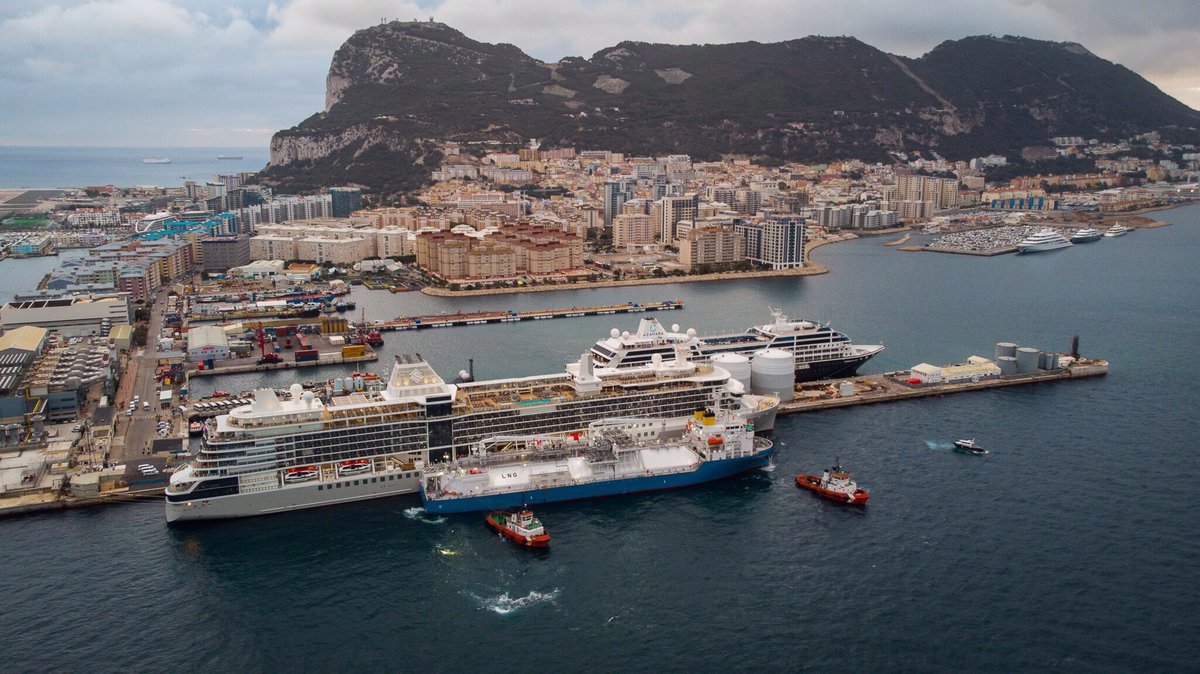LNG Bunker Snapshot: Wind power drop boosts gas demand in Europe
Rotterdam’s LNG bunker price rose last week due to lower wind power generation and storage drawdowns in Europe, while Singapore’s price dipped slightly with steady demand and high stock levels in Asia.
 PHOTO: Peninsula's bunker supply vessel Levante LNG delivering LNG to Silver Nova in Gibraltar. Peninsula
PHOTO: Peninsula's bunker supply vessel Levante LNG delivering LNG to Silver Nova in Gibraltar. Peninsula
Changes in weekly LNG bunker prices:
- Rotterdam up by $24/mt to $790/mt
- Singapore down by $6/mt to $825/mt
Rotterdam
Rotterdam's LNG bunker price has gained by $24/mt to $790/mt in the past week. This increase reflects an upward trend in the Dutch TTF Natural Gas contract, influenced by reduced wind power generation during low-wind days in Europe. As wind power declines, natural gas demand rises to supplement the electricity supply, driving up prices.
LNG send-out has increased in November, and storage levels have started to draw down, ING’s Warren Patterson said.
"LNG send-out" refers to the process of transferring regasified LNG from storage facilities into the natural gas pipeline network to meet consumer demand.
According to Gas Infrastructure Europe, European storage is around 93.6% full—above the 5-year average but below the nearly 99% recorded at this time last year. The ongoing storage depletion adds pressure to gas prices, further boosting LNG bunker rates.
Singapore
In the past week, Singapore's LNG bunker price has also dropped by $6/mt to $825/mt. The price reduction corresponds with a softer NYMEX Japan/Korea Marker (JKM) contract, Asia’s LNG benchmark, which has stabilised as spot demand wanes amidst high stock levels.
While Asian LNG demand remains tepid due to mild temperatures and robust long-term supply contracts, there’s potential for increased competition with European buyers during the winter. Additionally, concerns regarding Australian LNG supply add uncertainty to the market outlook.
Analysts indicate slower growth in Asian LNG demand this winter, following a summer buying spree in China that extended into October. Unless particularly cold weather hits, demand could remain steady or even slow as regional stockpiles stay high and temperatures remain moderate.
By Debarati Bhattacharjee
Please get in touch with comments or additional info to news@engine.online





